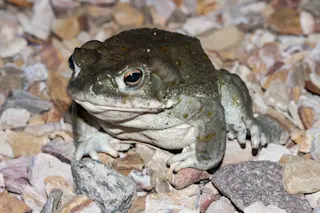Late last month, the U.S. National Park Service invited its visitors to “please refrain from licking” the toads that populate its parks. Though the invitation surely applied to toads of all shapes, sizes and species, it specifically singled out the Sonoran Desert toad, a large, leathery amphibian famous for secreting a special, super-toxic substance if frightened.
In addition to its toxicity, this poison, commonly called “Five” or “Bufo,” also possesses intense psychoactive properties if scraped from the toads’ skin and smoked. Apparently, the visions and sensations produced through this process are so strong and pleasant that people are starting to opt out of scraping and smoking and are going straight to the source, instead.
Though it isn’t clear whether touching tongue to toad produces the same sort or strength of trip as the traditional method of inhalation, these individuals’ interest in toad licking is part and parcel of a much larger phenomenon, not only for our own species.
In fact, history shows that Homo sapiens have always manipulated an assortment of psychoactive substances, taken from plant and animal sources for the purposes of pleasure or pain relief. Yet humans aren’t the only ones seeking out mind-modifying materials.
Here are five types of animals that appreciate a natural type of high.
1. Cats and Catnip
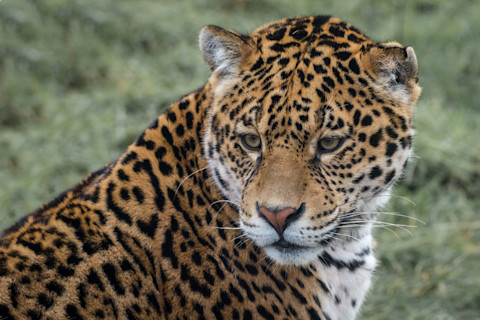
(Credit: Alan Tunnicliffe)
Alan Tunnicliffe
Whether we’re talking about the lovable lumps that live on our couches or the lions, leopards and lynxes that live in the wild, cats are famous for liking catnip. The plant appears all around the world, producing a chemical called nepetalactone. Whether inhaled or injected, this chemical puts cats in a drooling daze, causing them to sniff, stretch, roll and rub themselves mindlessly. Some scientists think the plant also produces hallucinations, since some cats swat or stalk imaginary prey while under its influence.
Several types of cats seek out other psychoactive substances to supplement their catnip craze. Jaguars, for instance, are also fans of the active psychoactive agents in ayahuasca, also known as yagé. The indigenous peoples of the Amazon Basin brew this type of plant into a beverage and sip it as a spiritual aid. But for jaguars, the same ingredients make for some big, bumbling and chilled-out cats.
2. Deer and Mushrooms
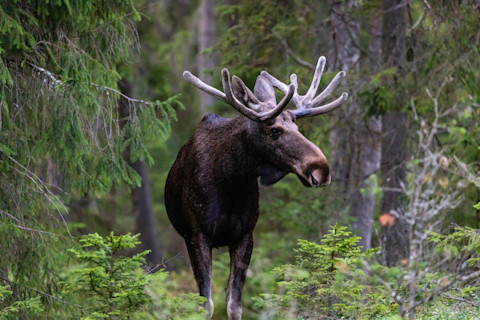
(Credit: ArtBBNV)
ArtBBNV
In Siberia, Scandinavia and similar regions, several species of deer, including moose and reindeer, are known to munch on fly amanita mushrooms while foraging for food in the wintertime. These mushrooms contain a sedative compound called muscimol and can cause the animals to act almost as if they are drunk, moseying around and making strange sounds.
Strikingly, the psychoactive properties of these mushrooms intensify during digestion, infusing the animals’ urine with psychoactive potency. Specialists say that the deer in these regions, as well as several indigenous tribes, have realized that they can ingest this intensified substance. It creates a much more potent high than that stemming from the mere consumption of the mushroom.
3. Dolphins and Pufferfish

(Credit: Andrea Izzotti)
Andrea Izzotti
Around the Atlantic’s Azores Islands in the 1990s, scientists saw several dolphins catching, chomping and passing around an inflated pufferfish for the first of a few separate times. Stressed puffers produce a potent poison that puts predators into a temporary trance if ingested in small amounts. And specialists ultimately surmised that the dolphins were intentionally terrifying the puffer into sending out spurts of the intoxicant.
Since the toxin, tetrodotoxin, is deadly in substantial doses, scientists say dolphins pass pufferfish from individual to individual incredibly cautiously, infusing the stoner's philosophy of “puff, puff pass” with a whole new meaning. After nibbling and nudging these fish, dolphins then float around aimlessly, staring at the surface of the water in apt fascination.
4. Big Horned Sheep and Lichen
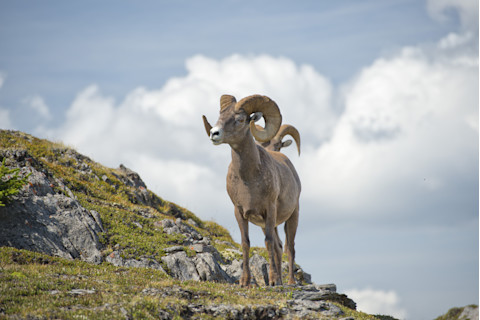
(Credit: Andrea Izzotti/Shutterstock)
Andrea Izzotti/Shutterstock
Sheep are famous for consuming almost any plants that are available on their pastures. However, scientists say that the animals are also known for straying from their traditional foraging territories to satisfy their insatiable longing for lichen. In fact, big horned sheep frequently separate themselves from their herds and trek through treacherous paths to find their favorite form of lichen, an addictive combination of algae and fungus that exists only in extreme environments.
Once they locate this hallucinogenic lichen in the heights of their Rocky Mountain home, the sheep then scrape the substance off the rocks with their teeth, wearing their teeth away in the process.
5. Wallaby and Poppies
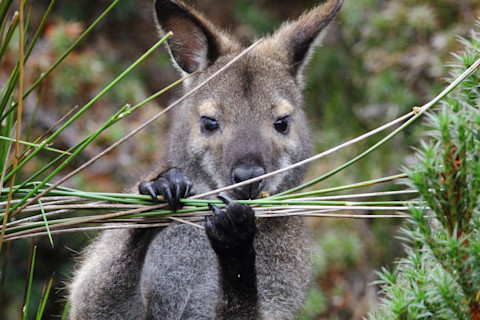
(Credit: Rizd/Shutterstock)
Rizd/Shutterstock
In Australia and the Australian island of Tasmania, a number of farmers have found wallabies stuffing themselves full in fields of poppy plants, which are cultivated as an active ingredient in prescription painkillers.
After consuming the poppies, observers state that the small creatures run around in circles until they “crash,” sometimes resulting in crop circles, and ultimately return to the fields again and again to feast upon the psychoactive plants.



